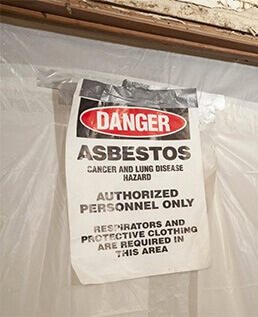Common Questions About Attic Mold Removal in Toronto
Posted in Mold Removal, on March 18, 2024
 Attic mold often develops efficiently when proper ventilation is in place, as warm air meeting the cold surface of the attic roof leads to condensation. This moisture can drip onto the attic floor or seep down the roof ceilings, providing optimal conditions for mold growth. Moisture issues in your attic must be resolved to avoid unnecessary problems. Mold grows in moisture and leaving it unchecked weakens attic sheathing and structural roof elements requiring attic mold removal. If this problem persists, it is best to contact Canada’s Restoration Services for effective mold removal in Toronto.
Attic mold often develops efficiently when proper ventilation is in place, as warm air meeting the cold surface of the attic roof leads to condensation. This moisture can drip onto the attic floor or seep down the roof ceilings, providing optimal conditions for mold growth. Moisture issues in your attic must be resolved to avoid unnecessary problems. Mold grows in moisture and leaving it unchecked weakens attic sheathing and structural roof elements requiring attic mold removal. If this problem persists, it is best to contact Canada’s Restoration Services for effective mold removal in Toronto.
Common Questions About Attic Mold Removal in Toronto
What Causes Attic Mold?
Excessive moisture accumulation can lead to ideal circumstances for mold spread. Causes may include roof leaks, inadequate ventilation, or the introduction of hot, moist air into the attic by appliances or exhaust fans. These factors represent some of the primary contributors to heightened attic moisture levels and subsequent mold development.
Is Attic Mold Dangerous to My Health?
Receive reliable and efficient attic mold removal from Canada’s Restoration Services. Mold growth in the attic poses significant health risks, such as respiratory problems, allergies, and asthma. Moreover, it can compromise the structural integrity of your home, resulting in expensive repair needs.
How is Attic Mold Removed?
The common professional method of mold removal in Toronto is to use dry ice blasting. Blasting your attic space with dry ice is one of the most effective ways to remove mold. Dry ice is capable of reaching tight spaces as well as gaps in framing. The thermal shock induced by the dry ice loosens up the mold lifting it from the surface it is resting on. This is one of many different methods.
Causes of Attic Mold Growth
Insufficient ventilation can result in the proliferation of mold. When moisture is combined with limited airflow, it creates a damp and humid atmosphere, perfect for mold to flourish. Be vigilant for indications of mold, such as the emergence of black, white, or brown patches on walls or the presence of a musty smell.
Signs of Attic Mold Growth
- Visible mold on surfaces: If you notice discoloured specks in shades of grey, black, green, or bluish hues along grout lines, walls, or other surfaces, it is highly likely that it is mold. It's also essential to keep an eye out for pink, red, or brown streaks. The texture of mold can vary, and it may appear powdery, fuzzy, or slimy. Additionally, dark water stains on walls, floors, or ceilings might indicate the presence of mold.
- Musty or damp odours: Excessive moisture, recurrent condensation, and elevated humidity levels may lead to the development of a stale odour. When dampness persists, it can create conditions conducive to mold growth, indicating the potential initiation of mold formation upon detecting the musty scent.
Health Risks Associated With Attic Mold
A mold allergy presents signs and symptoms similar to other upper respiratory allergies. Indications of allergic reactions triggered by a mold allergy can include:
Sneezing
Congestion or runny nose
Coughing and postnasal drip
Itchy eyes, nose, and throat
Watery eyes
Dry, flaky skin
Skin rash
Symptoms of mold allergy can vary in intensity and frequency among individuals. They may manifest consistently throughout the year or only during specific seasons and even under certain environmental conditions, such as damp weather or exposure to indoor or outdoor spaces with high mold concentrations.
For individuals with both mold allergies and asthma, exposure to mold spores can act as a trigger for asthma symptoms. In some cases, specific molds may precipitate severe asthma attacks. Signs and symptoms of asthma can include:
- Persistent cough
- Wheezing
- Difficulty breathing
- Tightness in the chest
- Allergic reactions
- Respiratory problems
- Skin irritation
Attic Mold Removal Process
- Inspection and assessment of the mold: Assessing and inspecting mold is essential for understanding its scope and type. Trained experts, such as Canada’s Restoration Services, meticulously evaluate affected areas to determine the extent of mold growth, guiding subsequent actions.
- Containment of the affected area: Containment of the affected space is vital to halt the spread of mold spores. Techniques like sealing off contaminated sections are employed to prevent further spreading.
- Removal and disposal of mold: Mold-infested materials are removed and disposed of according to strict protocols to ensure safe handling and disposal. Our professionals use proper equipment and protective gear to mitigate health risks.
- Cleaning and disinfecting the area: Thoroughly cleaning and disinfecting the area involves scrubbing and applying specialized solutions to eradicate remaining mold spores and deter future growth.
- Prevention of future mold growth: Preventing future mold occurrences involves addressing underlying moisture issues, enhancing ventilation, and implementing preventative measures such as regular inspections and maintenance. Educating occupants on mold prevention practices further boosts long-term effectiveness.
Rely on Canada’s Restoration Services for Expert Mold Removal
Attic mold can cause some serious problems for homeowners. Not only is your home's structural integrity at risk, but you are gambling with your health too. Do not attempt mold removal on your own. It is highly recommended that professionals like Canada’s Restoration Services be called in to get the job done properly. Canada’s Restoration Services has the expertise, experience, equipment, and knowledge in mold removal to get the job done effectively and efficiently, ensuring mold growth and spread prevention.







